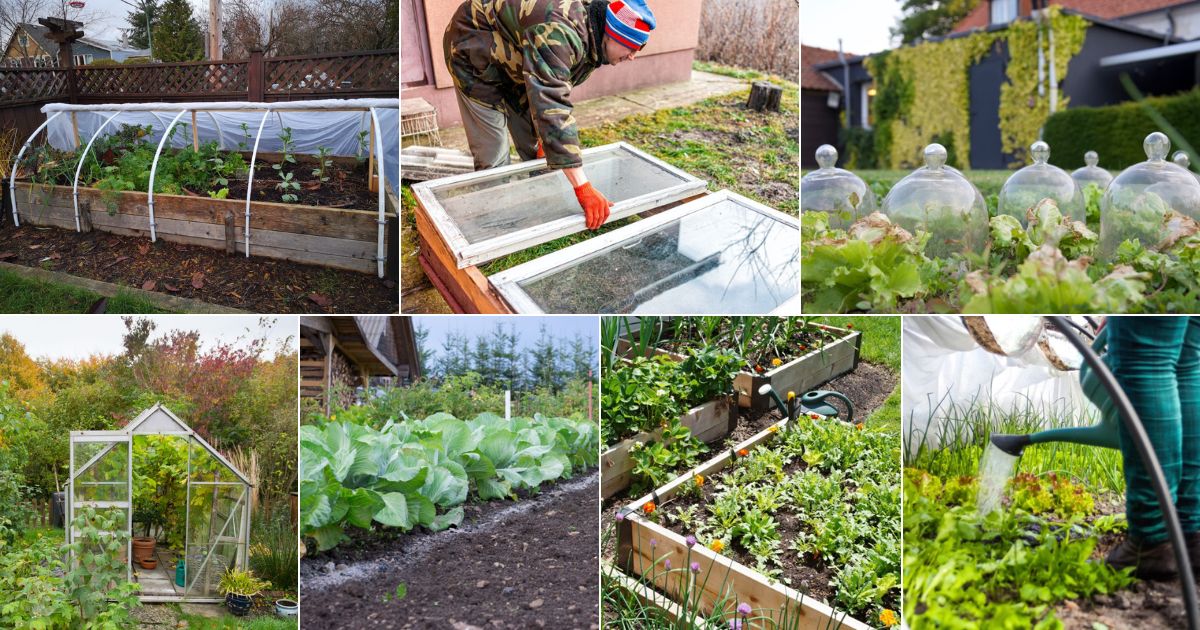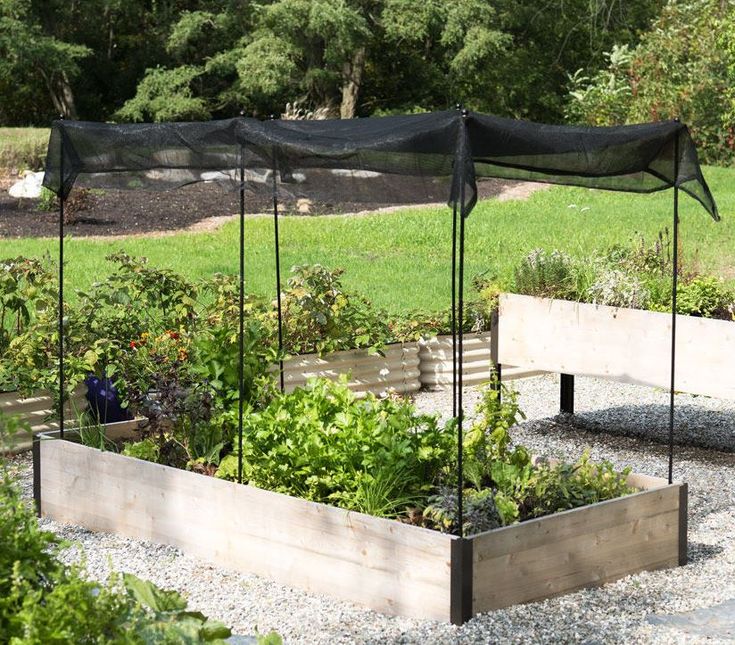

Extending your garden season for year-round harvests allows you to enjoy fresh, homegrown produce throughout the year, regardless of the weather. Imagine picking your own tomatoes in the dead of winter – it’s not just a dream; it’s achievable with the right knowledge and strategies. This article explores various techniques to extend the gardening season, from selecting the right crops to using greenhouses, cold frames, and indoor setups. We’ll also discuss crucial considerations like frost dates, seed starting, and proper maintenance, guiding you towards a bountiful harvest all year long. The structure will encompass selecting suitable crops for varying climates, understanding optimal growing conditions, and employing clever strategies to ensure a prolonged gardening season.
Selecting the Right Vegetables
Understanding Your Local Climate
Choosing the correct vegetables for your climate is fundamental to success in extending the gardening season. The success of your year-round harvest hinges largely on your ability to provide suitable environments for your chosen vegetables. Researching the specific frost dates in your area helps determine which vegetables can tolerate cooler temperatures and frost. Knowing the average last and first frost dates is crucial, as frost can damage or kill certain plants. Consider local microclimates; some areas within your region might experience different frost dates or temperatures, which affect your plant choices.
Cold-Hardy Vegetables
Many vegetables are naturally suited for extending your season. Cold-hardy vegetables, like spinach, kale, and certain lettuces, can tolerate colder temperatures and frosts, enabling you to harvest them well into the fall and early winter months. Choose varieties that are specifically cold-hardy for your region, as some perform better than others.
Timing Matters
Planting at the right time is critical. Using a seed starting guide or seed catalogs is crucial for determining when to sow seeds. Early sowing indoors, or starting seeds in seed trays, enables you to get a head start on the season. This can result in earlier harvests when compared to direct sowing into your garden bed.
The Role of Greenhouses and Cold Frames
Protecting Your Plants
Greenhouses and cold frames are essential tools for extending your garden’s season. Greenhouses create a controlled environment where you can manipulate temperature and light, allowing you to grow plants that may not survive outdoor conditions during certain periods of the year. They create a protective barrier against harsh weather, extending the possible growing season. Cold frames provide a similar but less controlled environment, and while not as effective as a greenhouse, they still offer crucial protection.
Microclimates
These structures are particularly useful in areas with significant fluctuations in temperature or periods of harsh weather. In areas with extreme temperatures, a greenhouse or cold frame can significantly help manage the temperature, creating a suitable environment for your plants. Proper ventilation in these structures is critical to prevent overheating and maintain optimal growing conditions.
Choosing the Right Structure
The ideal choice between a greenhouse and cold frame hinges on your specific needs. If you need high control over the growing environment and are willing to invest more, a greenhouse is the way to go. If you need a relatively affordable and simple option, a cold frame might be a better choice.
Indoor Gardening Solutions
Growing Lights
Indoor growing is essential for extending the season. Growing lights offer excellent control of your growing environment, allowing you to grow crops year-round indoors. They simulate sunlight and can be tuned to specific light needs of different plant species. Investing in high-quality grow lights will contribute significantly to extending your garden season indoors.
Space Optimization
Vertical gardening systems and container gardening are effective methods to optimize space in your indoor setup. Vertical gardens are good for maximizing space and can be useful for maximizing growing area. Consider the amount of space available when setting up an indoor growing space. Container gardening allows you to move plants around and grow a variety of crops in compact containers.
Temperature and Humidity Control
Maintaining suitable temperatures and humidity levels is vital for healthy growth indoors. Consistent monitoring of both is crucial to successful indoor gardening. Use humidity control systems if needed. This will enhance plant development and overall yield, allowing your plants to thrive, and helping extend the garden season.
Succession Planting
Maximizing Harvest
Succession planting is a technique that maximizes harvests by planting seeds at staggered intervals. This approach ensures a continuous supply of fresh produce throughout the year. Planting seeds earlier in the season will also yield a continuous harvest through the season.
Different Planting Cycles
By staggering plantings, you can create multiple harvests of the same vegetable. Planting the same seeds at different times ensures you’ll get a harvest during various parts of the growing season, increasing your chances of having a harvest year round.
Practical Applications
Succession planting helps maintain a steady supply of vegetables. You can even plan your harvests in advance and adapt your growing methods accordingly, providing you with fresh produce throughout the year. Learn the specific planting times and optimal harvest windows for various types of vegetables to best use succession planting.
Beyond the Basics
Soil Health
Maintaining fertile soil is fundamental to a successful harvest throughout the year. Healthy soil contains essential nutrients required for vigorous plant growth. Regular fertilization and soil amendments can ensure your soil remains fertile, promoting growth.
Advanced Techniques
Hydroponics
Hydroponics is an advanced technique that involves growing plants in a nutrient-rich water solution rather than soil. Hydroponics can extend the growing season, as it can accommodate a wider range of conditions, and can be used for growing a variety of plants. Hydroponic systems are becoming more accessible and affordable, enabling year-round gardening in more diverse environments.
Plant Protection
Pest and Disease Management
Consistent monitoring for pests and diseases is essential for maintaining healthy plants throughout the growing season. Regular inspections and timely interventions minimize damage. Using organic pest control methods reduces the risk of chemical contamination in your food. Regular monitoring for pests and diseases is critical for extending your growing season.
Mulching Strategies
Soil Retention
Mulching is a valuable strategy for retaining moisture in the soil and regulating soil temperature. Mulch helps regulate soil temperature, ensuring that the soil remains at the optimal temperature for plant growth. This is especially important during the cooler parts of the year when temperatures fluctuate.
Conclusion (in markdown):
Summary
Extending your garden season for year-round harvests is achievable with careful planning and execution. Learning to adapt your strategies to your local climate, selecting appropriate varieties, and utilizing techniques such as indoor growing, greenhouse setups, or cold frames will yield the rewards of year-round gardening. This approach provides a consistent supply of fresh, homegrown produce, reducing reliance on store-bought options and enhancing your overall garden experience.
Actionable Steps
Start by identifying the last and first frost dates in your area. This will help determine which vegetables are best suited for your region. Consider purchasing or building a greenhouse or cold frame. Begin seed starting indoors earlier to get a head start on the growing season.
Next Steps
Look at seed catalogs or gardening websites for local varieties and planting times. Read expert advice on specific vegetable requirements in your region. Learn about the different techniques discussed to best approach extending the growing season for your region. Implementing these strategies will help you in extending your growing season and producing a year-round harvest.
Frequently Asked Questions
How can I determine what vegetables are best for extending the growing season in my region?
Understanding your local climate and frost dates is crucial for selecting the right vegetables for extending your garden season. Research the average last frost date in your area to select cold-hardy vegetables that can withstand cooler temperatures. Look for varieties that are known for their ability to mature quickly, or alternatively, varieties that can tolerate cooler temperatures will extend your growing season.
What are some effective techniques to extend your garden season, aside from greenhouses or cold frames?n
Several techniques allow you to extend the season beyond a traditional garden. Consider using grow lights and indoor gardening setups for your plants, or starting seeds indoors before planting them in the garden. Properly mulching your garden beds can help retain warmth and moisture during cooler periods. Cover crops can be beneficial by adding nutrients and moisture to the soil, maintaining warmth, and allowing for more options in the growing season.
Are there specific varieties of vegetables better suited for winter gardening, compared to summer varieties?
Yes, many winter-hardy vegetables are better suited to cooler growing conditions. For example, root vegetables like carrots, beets, and turnips, leafy greens such as kale, spinach, and lettuce, and certain types of cabbage are great options. These vegetables generally have a slower growth rate, but can flourish under cooler conditions, extending the harvest time.
In conclusion, extending your garden season for year-round harvests is achievable with careful planning and execution. By understanding your local climate, selecting appropriate varieties, and utilizing strategies like indoor growing, greenhouse setups, or cold frames, you can significantly extend the growing period. This allows you to enjoy fresh, homegrown produce throughout the year and reduce your reliance on store-bought options. Experiment with different methods, learn from your experiences, and enjoy the rewarding process of year-round gardening. Ready to start your year-round harvest journey? Visit our website to find out more about our expert gardening guides and supplies!